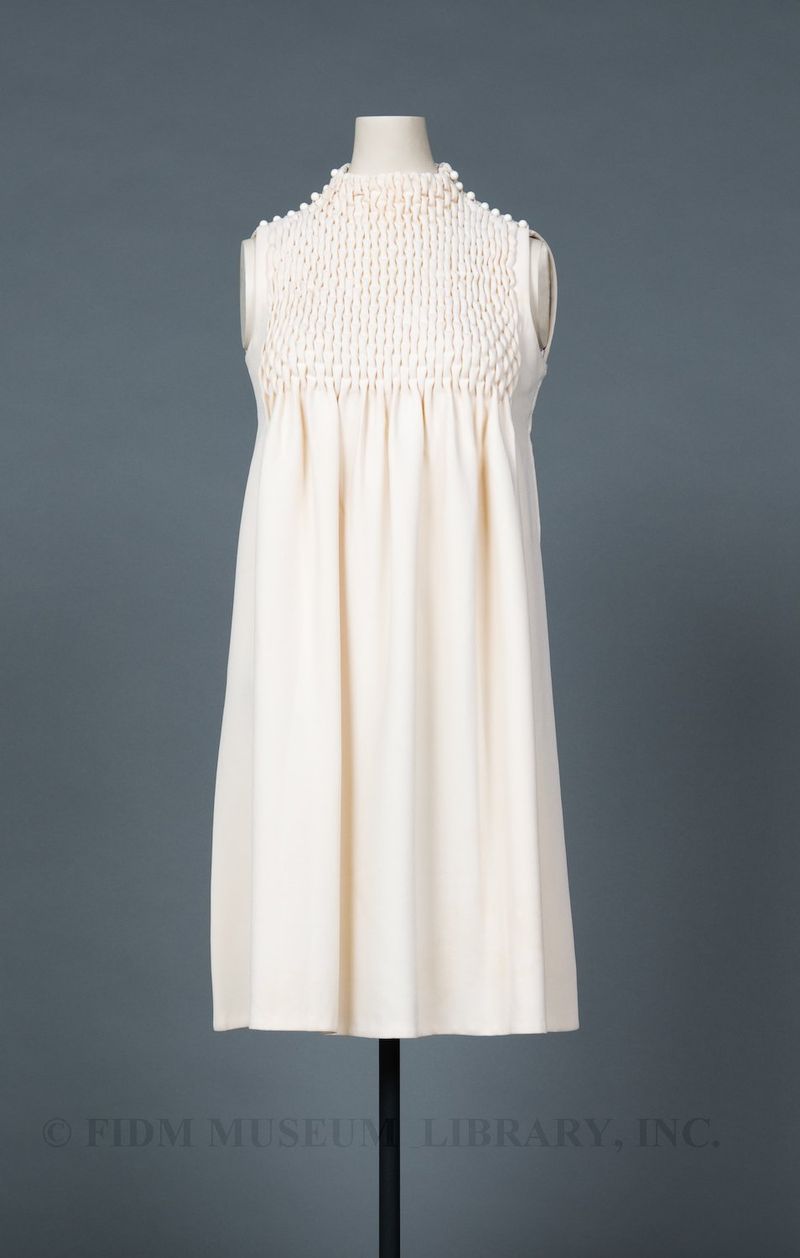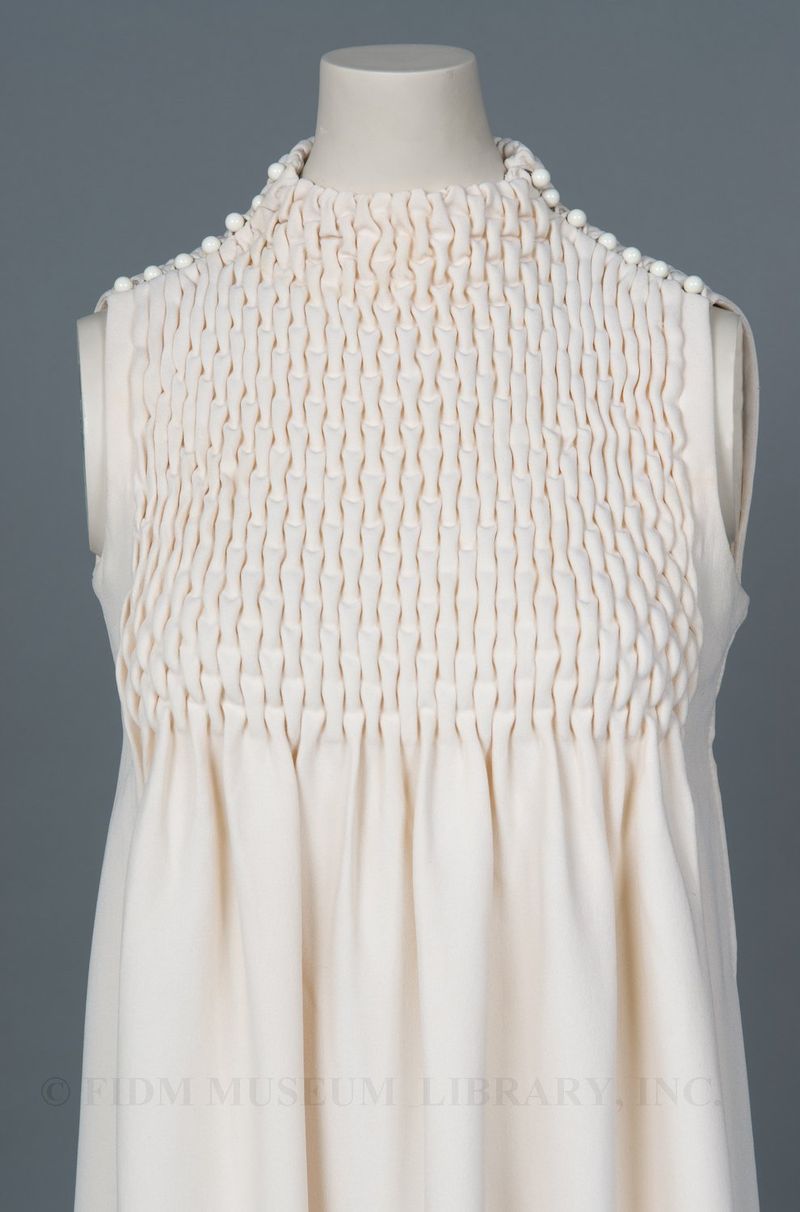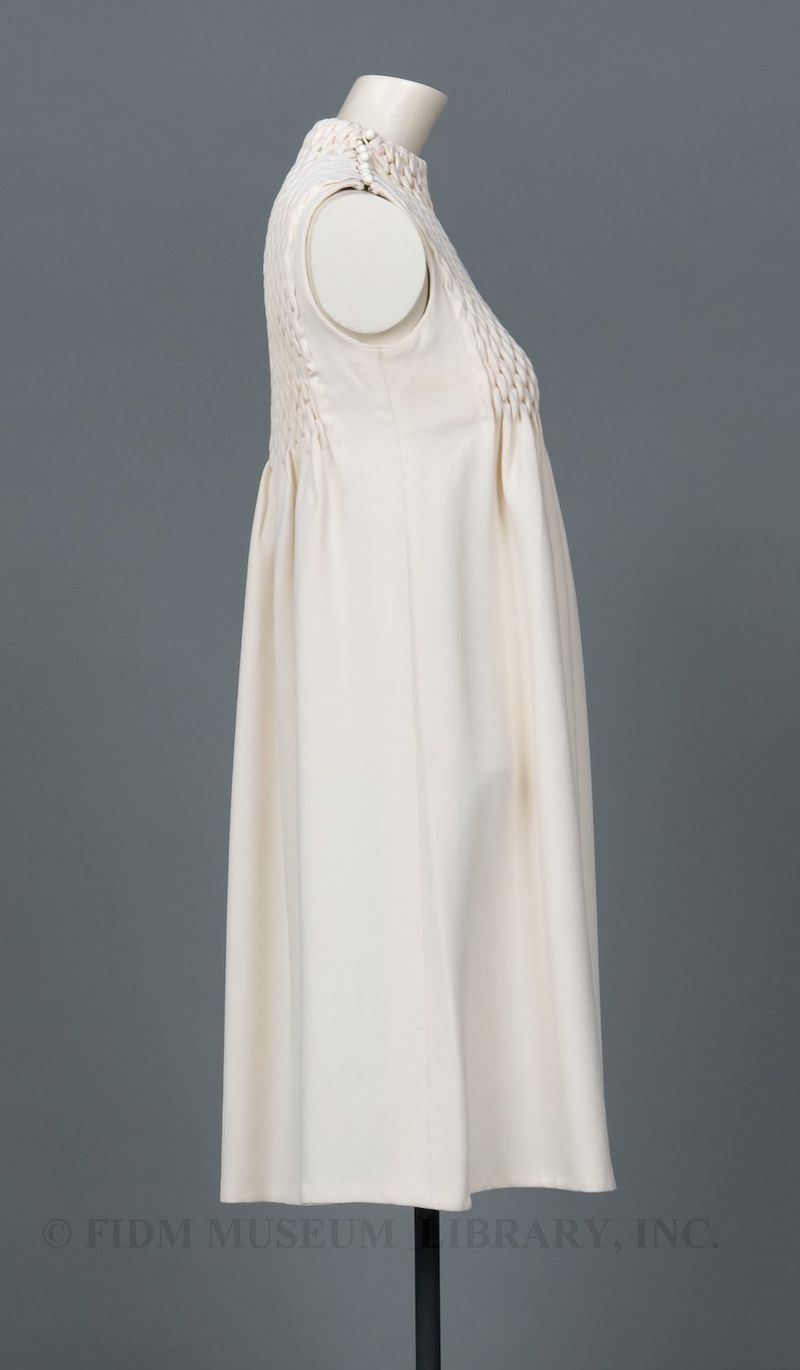During the later years of the 1960s, the '"little girl" look was prominent in fashion. Many women dressed in loose, A-line shift dresses similar to those worn by little girls and accessorized with items (hairbows, headbands, flat shoes) associated with youth. Twiggy, with her childlike appearance and demeanor, is the iconic representation of this style. As described in a somewhat satirical 1968 New York Times article, designers "flipped over the princess dresses and little smocked numbers" worn by little girls and "made the dresses larger, used very expensive fabrics and put price tags on big enough to pay for a little backyard merry-go-round."1
Jeanne Lanvin
c. 1968
Museum Purchase
S2003.5.16
Does the smocked bodice of this dress remind you of another garment you've seen on our blog? Perhaps this pink smocked dress attributed to Liberty & Company? Though created about 70 years apart, both smocked garments embody a sense of nostalgia. While the pink smocked dress can be categorized as a reaction against 19th century industrialization, the white smocked Lanvin dress reacts to the insistent emphasis on the new and novel seen throughout the 1960s. Though the short, unstructured silhouette is consistent with the 1960s, the smocked bodice hints at an interest in craftsmanship and handwork, something markedly absent in the earlier years of the decade. Because smocking was widely linked with childhood innocence, it also suggests a nostalgia for the past and what might have been viewed as a less-complicated era. This suggestion of innocence is also present in 19th century smocked garments. By using a decorative technique with such strong associations of innocence and nostalgia, the designer of this dress produced a garment perfectly synced to the little girl look of the 1960s.
Nostalgia and historic revivals are consistent themes in fashion. Though fashion is inherently fascinated with the new, so-called "new" looks are often revivals or reinterpretations of historic styles. Nostalgic revivals of past fashions seem to appear most frequently in times of rapid social change, as if looking to the past can provide an anchor. There's also the aesthetic aspect of historic revivals; do some exceptional designs or decorative elements demand repeating? Maybe the is the case with smocking, which has reappeared numerous times since it's initial popularity in the late 19th century.
Historic revivals raise a number of compelling questions. Can a historic style be referenced in a way that feels new? Does an acknowledgment of the connections between past and present make for a more compelling design? Is it important (or possible) to discard historicism in favor of moving forward?
1 McCormack, Patricia. "The 'Little Girl' Look" New York Times 15 Nov. 1968: B1.





not a flattering look for a grown up woman. Fine for a pre-teen. Nice smocking.